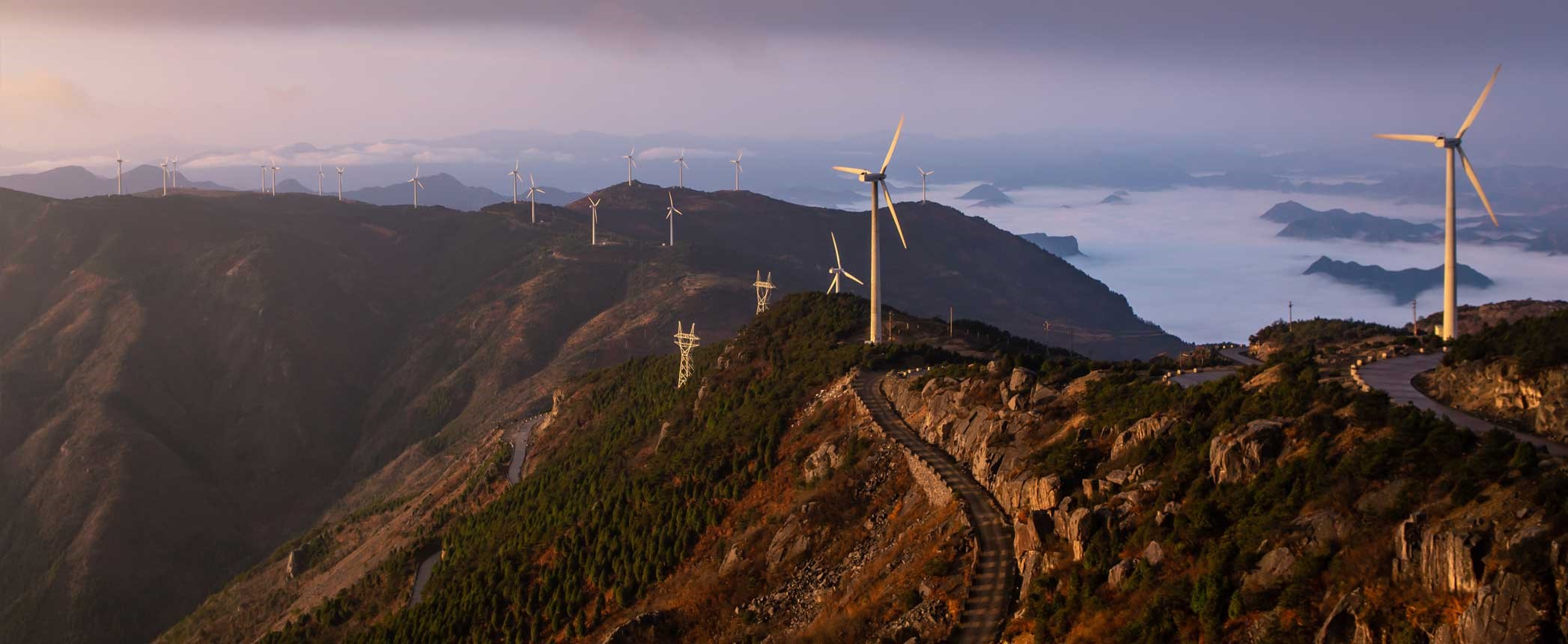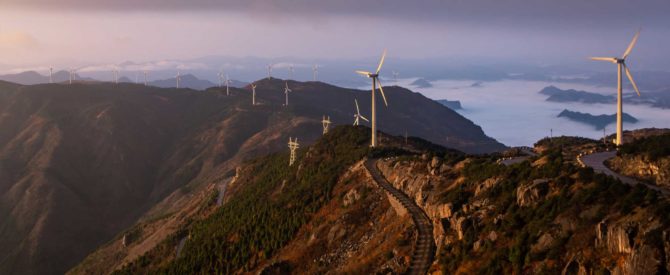
Global lubricant demand for wind energy is likely to hit a speed bump in the current economic climate but should rebound in subsequent years, an industry consultant said in a recent webinar. A key market remains China, which is expected to account for nearly half of all new wind turbine capacity over the next five years.
Kline & Co.’s projected outlook for lubricant demand in wind energy from anticipates that the market will be hurt by the economic contraction resulting from the COVID-19 pandemic under both optimistic and pessimistic projections. “Almost all scenarios suppose a downfall, a slump in consumption for lubricants used in wind energy by 2021, followed by a sharp ‘V’ recovery for the next few years,” Gabriel Tarle, a project lead in Kline’s energy practice, said during a webinar about the outlook for wind turbine lubricants demand in the current economic environment. The company published a study on the topic in May.
The company estimated global demand for lubricants in wind energy reached about 40,000 to 50,000 metric tons in 2019, valued at $400 million to $500 million, as total installed wind energy capacity topped 650 gigawatts. “Even though it’s a small fraction of total lubricants demand, wind turbines are an important niche due to their rapid growth and high synthetic penetration,” Tarle said.
The wind energy industry has grown exponentially over the past 20 years, drawing new entrants on the lubricants side, Tarle said, especially in the service fill market. Despite the growth, he noted three key concerns in the minds of lubricant marketers: industry growth in the current economic climate; the effect of direct drive machines and drain interval extension on lubricant consumption; and fading government subsidies.
He explained that in Asia, more urgent than global warming is the need to address deteriorating air quality due to pollution from coal fired thermal power plants. Both China and India have experienced rapid growth in wind energy in the last 15 years. “Over the next five years, China will account for nearly 40% of all new wind turbine capacity,” he said.
Wind Energy Lube Products
The company estimated global gear oil demand in wind energy in the 20,000 to 40,000 ton range in 2019. Consumption by turbines in China accounted for nearly half of that, followed by the United States, Spain, India, Germany and those in other countries. Kline estimated that overall demand for gear oil grew at a compound annual rate of 12.3% from 2008 to 2019.
Tarle said that this growth rate lagged growth in wind energy capacity during the same period, mainly because of extended drain intervals resulting from the use of synthetic gear oils, as well as loss of demand to direct drive wind turbines that don’t need gear oil in the main gear box. “Gear oil demand for the service fill-market has increased as a share of the total from 2015 to 2019,” he said. He added that demand for gear oil is set to become increasingly related to new installations because drain intervals are increasing.
Global hydraulic fluid demand reached in the range of 6,000 to 10,000 tons in 2019. Among key markets, wind energy in the United States accounted for around a quarter of that, followed by China, Spain, India and Germany. The company anticipates demand for hydraulic fluids for wind energy applications will continue to decline as synthetic formulations continue to replace mineral formulations to match the extended drain intervals of gear oils. However, in value terms, both hydraulic oils and gear oils are set to increase, he noted.
Tarle noted that demand for these products actually fell by a compound annual rate of 5.7% since peaking in 2015. “This is mainly due to the fact that the quality of hydraulic oil improved significantly and the increased penetration of synthetic oils,” he explained. The service-fill market share decreased from 2015 to 2019.
China dominated in grease demand for wind energy, dwarfing that of the U.S., Germany, India and Spain. Tarle said the share of the initial fill market grease increased from 2015 to 2019. Grease is expected to grow at a fast pace through 2024, he said, driven by new installations and higher consumption. He noted that direct-drive machines use grease but don’t use gear oil.
Suppliers
Kline found the supply base for lubricants used in wind turbines largely consolidated among a few key companies. Top suppliers for such lubricants in 2016 included global majors BP (Castrol), ExxonMobil and Shell, which are present in almost all markets. Other key suppliers include Fuchs, Chevron, Total, Amsoil and specialist grease suppliers such as Kluber, Dow and SKF. “The leading suppliers, and in particular the global majors, have a strong relationship with wind turbine OEMS, which enables them to cater to their initial fill and warranty business,” he said.
He noted that wind energy is a high-margin business for lubricant marketers. “The share of synthetics in the overall demand exceeds any other end-use industry,” Tarle said. “The cost of lubricants is not significant in the overall maintenance cost, and sales are driven more by product performance guarantees and track record. Thus, there is minimal downward pressure on product prices.”
Certain OEMs, such as India-based Suzlon, don’t have any agreements in place with a lubricant supplier, Tarle said. This means the company will purchase from the open market lubricants for initial fill and service fill.
Wind Energy Capacity
Global installed wind energy capacity is estimated to grow at a compound annual rate of 9.1%, from 650.1 gigawatts in 2019 to 1,005 GW by 2024, he said, citing a list of projects published in the Global Wind Energy Council Outlook Spring 2020.
Tarle noted the COVID-19 pandemic is expected to stall much of the activity and perhaps postpone some of the scheduled wind energy projects. “In terms of a potential economic stimulus, the wind energy sector might not be on most governments’ agendas since the sector employs rather few people,” Tarle added.
China dominated among major markets in installed wind capacity in 2019 with 37%, followed by the United States at 17%, Germany at 9%, India with 6% and Spain at 4%.

Wind energy turbines on top of a mountain in the Kuocang Mountain region of Zhejiang, China.